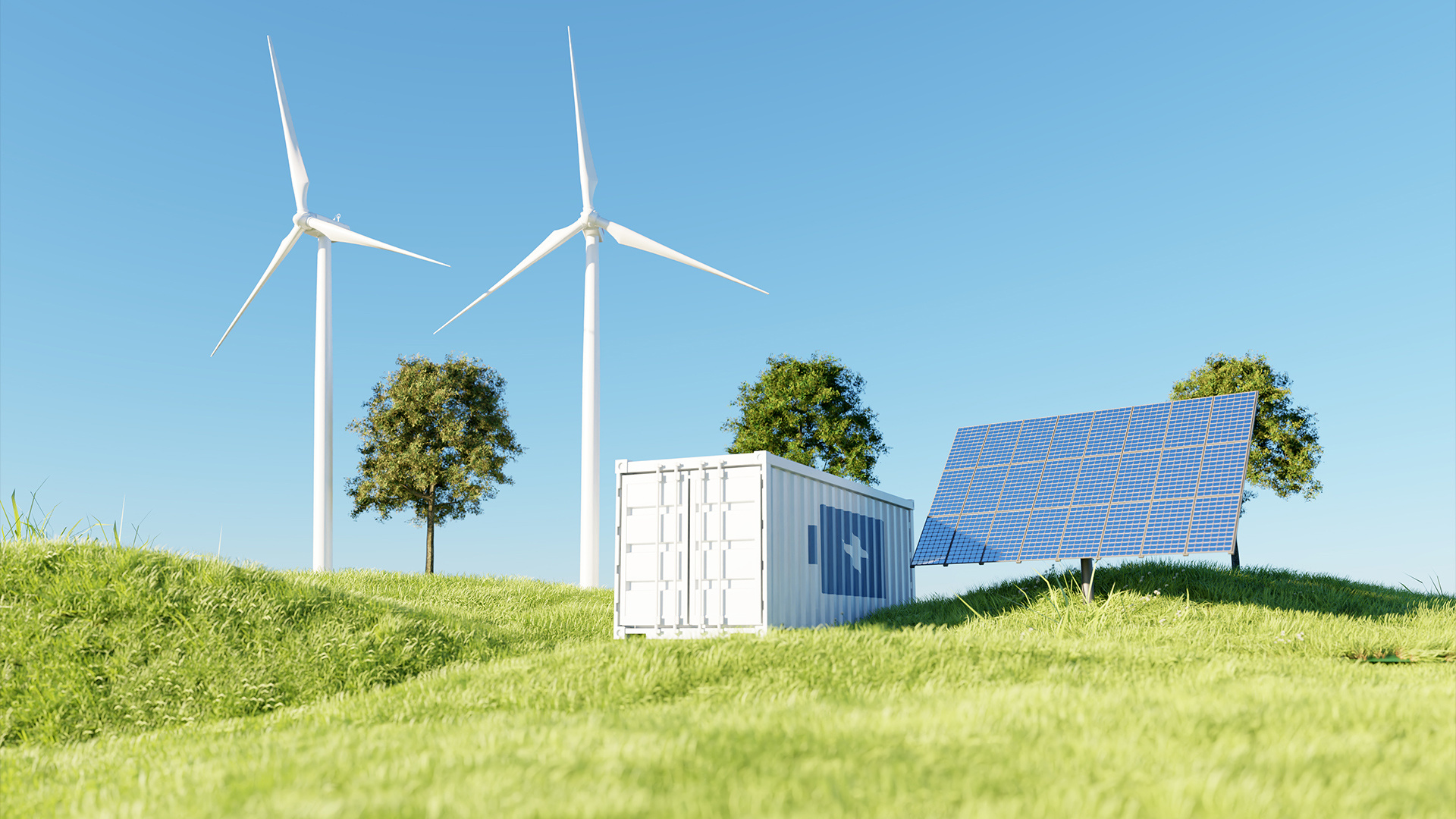A Journey Through the Republic | Power Grid Leaps Over the Tianshan Mountains, Bringing Electricity to All Directions
Release time:
2024-09-30 10:50
Source:
China Electricity News
On September 28th, CCTV's special program "Republic Review" celebrating the 75th anniversary of the founding of the People's Republic of China aired its "Xinjiang Chapter"—"Flying Over the Tianshan Mountains, Building a Beautiful Xinjiang." The report highlighted the rapid development of Xinjiang's new energy industry, with the construction of three ultra-high voltage DC transmission lines for Xinjiang power transmission underway. Once operational, the project will meet a quarter of Chongqing's electricity demand, 50% of which will come from clean energy. Since 2012, the cumulative power transmission from Xinjiang has reached 826.1 billion kilowatt-hours, contributing strong momentum to national development.
In recent years, State Grid Xinjiang Electric Power Co., Ltd. has fully and accurately implemented the Party's strategy for governing Xinjiang in the new era, implemented the deployment and requirements of the Xinjiang Uygur Autonomous Region Party Committee and Government, and under the leadership of the Party group of the State Grid Corporation of China, actively served major national strategies and local economic and social development, accelerated the improvement and strengthening of the backbone grid, vigorously promoted the development of clean energy and Xinjiang power transmission, worked together with determination, and injected strong impetus into writing a new chapter of Chinese-style modernization in Xinjiang.
Strong Power Grid Services the Construction of a New Energy System
On September 24th, 30 kilometers from Xinhe County, Aksu Prefecture, on the Gobi Desert, with the roar of the tensioning machine, the huge conductor reels slowly rotated, and wires slowly crossed the more than 50-meter-high crossing network, extending towards the distant towers. The Kuche-Alar-Bachu 750 kV line project has fully entered the conductor stringing phase.

Kuche-Alar-Bachu 750 kV Transmission Line Project Crossing 750 kV Line
The project starts from the Kuche 750 kV substation and ends at the Bachu 750 kV substation. It will build a new Alar 750 kV substation, adding 3 million kVA of substation capacity. The line is 485.029 kilometers long, with 1049 new towers. It is scheduled to be completed and put into operation in November 2025. As the backbone grid of the new power system in southern Xinjiang, after the project is put into operation, it will effectively improve the power supply capacity of the Xinjiang main grid to the four prefectures in southern Xinjiang and the transmission capacity of new energy in southern Xinjiang.
The power grid is a hub platform for energy conversion, utilization, and transmission and distribution, playing an important role in serving the construction of a new energy system. State Grid Xinjiang Electric Power has accelerated the construction of a new power system, continuously improving and strengthening the core backbone grid, and forming a 750 kV main grid covering all prefectures and cities in Xinjiang.

Yili-Kuche 750 kV Transmission and Substation Project Crossing the Tianshan Mountains
Looking down at the vast Xinjiang land, towering towers lead thousands of miles of shining silver lines, crossing the Tianshan Mountains, weaving a crisscrossing power grid. Xinjiang's 750 kV power grid extends east to Hami, west to Bole and Yili, south to Kashgar and Hotan, and north to Altay. Up to now, 28 750 kV substations have been built in the whole region, with a total transmission line length of 10,300 kilometers. Xinjiang has become the province with the most 750 kV substations, the longest 750 kV lines, and the largest coverage area in the country, realizing complementary advantages between east and west, south and north Xinjiang in terms of day and night and seasons, and greatly improving the resource allocation capacity of the whole region.
Promoting Transformation and Promoting Green and Low-Carbon Energy Development
Traveling through the Tianshan Mountains in Xinjiang, in the depths of the boundless desert, photovoltaic panels are set up, forming rows and arrays, shimmering in the sun, like a blue ocean growing on the vast yellow sand. On the vast Gobi Desert, wind turbines stand majestically, with 100-meter-long blades whirling, forming the most spectacular sight in the desert.
Xinjiang is rich in wind and solar energy resources. It is a large-scale clean energy base explicitly defined in the "14th Five-Year Plan" of the country, with "favorable timing" for energy transformation, "favorable location" with complete scenarios, and "harmony between people and government" with government-enterprise collaboration. As a central state-owned enterprise stationed in Xinjiang that is related to national energy security and national economy and people's livelihood, State Grid Xinjiang Electric Power fully serves Xinjiang's new energy to ensure it can be "connected," "transmitted," and "utilized well."

Wind Power Plant and 110 kV Transmission Line near Sailimu Lake, Xinjiang
To provide good grid connection services for new energy projects, State Grid Xinjiang Electric Power has established a collaborative work mechanism of "monthly promotion and weekly control" with power generation enterprises, dynamically tracking the construction progress of new energy stations and transmission projects to ensure that new energy projects are "connected as they should be and connected early." Vigorously promoting digital empowerment, deepening the application of the "New Energy Cloud" platform, realizing online application, time-limited acceptance, and full-process tracking of new energy grid connection applications, greatly improving communication efficiency between the power grid company and power generation enterprises.
Energy storage projects are an indispensable "reservoir" for new energy and an important way to enhance the regulation capacity of the power system under the trend of large-scale development of new energy. On July 31, Xinjiang's first pumped storage power station—the State Grid Xinjiang New Energy Fukang Pumped Storage Power Station—was fully put into operation, providing strong support for ensuring the safe and stable operation of the Northwest China Power Grid and the Xinjiang Power Grid and promoting the construction of a new power system.

State Grid Xinjiang Electric Power Research Institute employees inspecting the Fukang Pumped Storage Power Station
In response to the "dual high" and "dual peak" characteristics of the power system after the large-scale grid connection of new energy, State Grid Xinjiang Electric Power has carried out research and demonstration of pumped storage power stations, giving full play to their role as "stabilizers" and "regulators" in the power system, further improving the system's regulation capacity, and effectively promoting new energy consumption.
To better promote the development of new energy, State Grid Xinjiang Electric Power promotes the diversified development of new energy storage, adhering to the support of regional new load, focusing on on-site consumption, and supplementing transmission, actively extending to both the power generation and load ends, relying on regional grid access conditions, providing strong support for the grid connection, transmission, and consumption of "desert, Gobi, and wasteland" bases, helping to effectively release the potential of energy resources, promoting the coordinated development of wind, light, water, and storage, and building a high-quality development pattern of new energy and related industries.
Up to now, the installed capacity of new energy in Xinjiang has exceeded 80 million kilowatts, accounting for nearly 50% of the total installed capacity of power generation, ranking among the top in the country. The installed capacity of new energy in 14 prefectures and cities in Xinjiang has all exceeded 1 million kilowatts, especially in Hami and Changji, which have exceeded 10 million kilowatts. Three 10-million-kilowatt-level new energy bases, including Hami, Zhundong, and the southern Xinjiang Ring Tower, have been built, completing the relevant tasks of "building a large-scale clean energy base in Xinjiang" in the national renewable energy "14th Five-Year Plan" ahead of schedule. It is expected that by the end of 2024, the cumulative installed capacity of new energy in Xinjiang will exceed 100 million kilowatts. At that time, new energy will become the largest power source in Xinjiang.
Promoting Transmission, Building a "Power Silk Road"
As of September 26, the Changji-Guquan ±1100 kV ultra-high voltage DC transmission project has been in safe operation for five consecutive years, with a cumulative safe operation of 1828 days and a cumulative power transmission of 299.52 billion kilowatt-hours.
As the second DC transmission channel for Xinjiang's power transmission, this project is the world's highest voltage level, longest transmission distance, and largest capacity ultra-high voltage DC transmission project. The daily power transmission volume is equivalent to 70,000 tons of standard coal. To transport this coal to Anhui, nearly 1200 15-meter-long train cars would be needed, which would stretch 18 kilometers if lined up. However, through the Jiquan DC project, the electricity generated from this coal can instantly illuminate Anhui.

State Grid Xinjiang Electric Power employees conduct infrared temperature measurement work on the Jiquan ±1100 kV line.
Affected by energy resource endowment, China's energy production and consumption show obvious reverse distribution characteristics: the energy consumption in central and eastern China accounts for more than 70% of the national total, while the production accounts for less than 30%; western China is rich in energy resources, but its economic development is relatively backward. These objective factors determine that China's energy and power development must take the path of long-distance, large-scale power transmission and nationwide optimization of power resource allocation.
In 2010, Xinjiang completed the Hami-Dunhuang 750 kV power transmission and transformation project, realizing interconnection between Xinjiang and the national power grid and opening the prelude to Xinjiang's power transmission. Currently, Xinjiang has built four transmission channels of “two AC and two DC”, with a power transmission capacity of 25 million kilowatts. The transmission range has expanded from the initial seven provinces (autonomous regions, municipalities directly under the Central Government) to 21 provinces (autonomous regions, municipalities directly under the Central Government), truly achieving the goal of "energy transmission across the air, electricity reaching all of China." This strongly supports the national power supply, transforming Xinjiang's resource advantages into economic advantages.
Currently, the third ultra-high voltage Xinjiang power transmission channel—the Hami-Chongqing ±800 kV ultra-high voltage DC transmission project—is under construction and is expected to be completed and put into operation in 2025. By then, Xinjiang's power transmission capacity will increase to 33 million kilowatts, and the proportion of clean energy transmission will increase from the current nearly 30% to 50%, making Xinjiang the largest new energy transmission base in China.

Hami-Chongqing ±800 kV Ultra-High Voltage DC Transmission Line Project
Since the implementation of the Xinjiang power transmission project in 2010, by the end of August, Xinjiang has cumulatively transmitted 826.1 billion kilowatt-hours of electricity to 21 provinces (autonomous regions, municipalities directly under the Central Government) across the country. This electricity can supply 1.4 billion people nationwide for 256 days. Among them, the proportion of new energy power transmission is nearly 30%, meaning that for every three kilowatt-hours of electricity transmitted from Xinjiang, nearly one kilowatt-hour is green electricity.
With perseverance and continuous effort, State Grid Xinjiang Electric Power will continue to accelerate the clean and low-carbon transformation of energy as its mission and responsibility. It will take the lead and set an example in the construction of a new power system and a new energy system, injecting strong green impetus into a beautiful China with abundant power.
Related News
On-site secondary debugging - Guangdong Electromagnetic Technology Company
Our company provided compensation filter devices (on-site load type: twenty-roll reversible cold rolling mill) to a certain electromagnetic technology company in Guangdong. There are two sets of equipment on site, and all debugging has been completed.
Beijing YiNeng Electric Technology Co., Ltd.
Address: No.27, Keyuan Road, Daxing District, Beijing

Copyright©Beijing YiNeng Electric Technology Co., Ltd.


